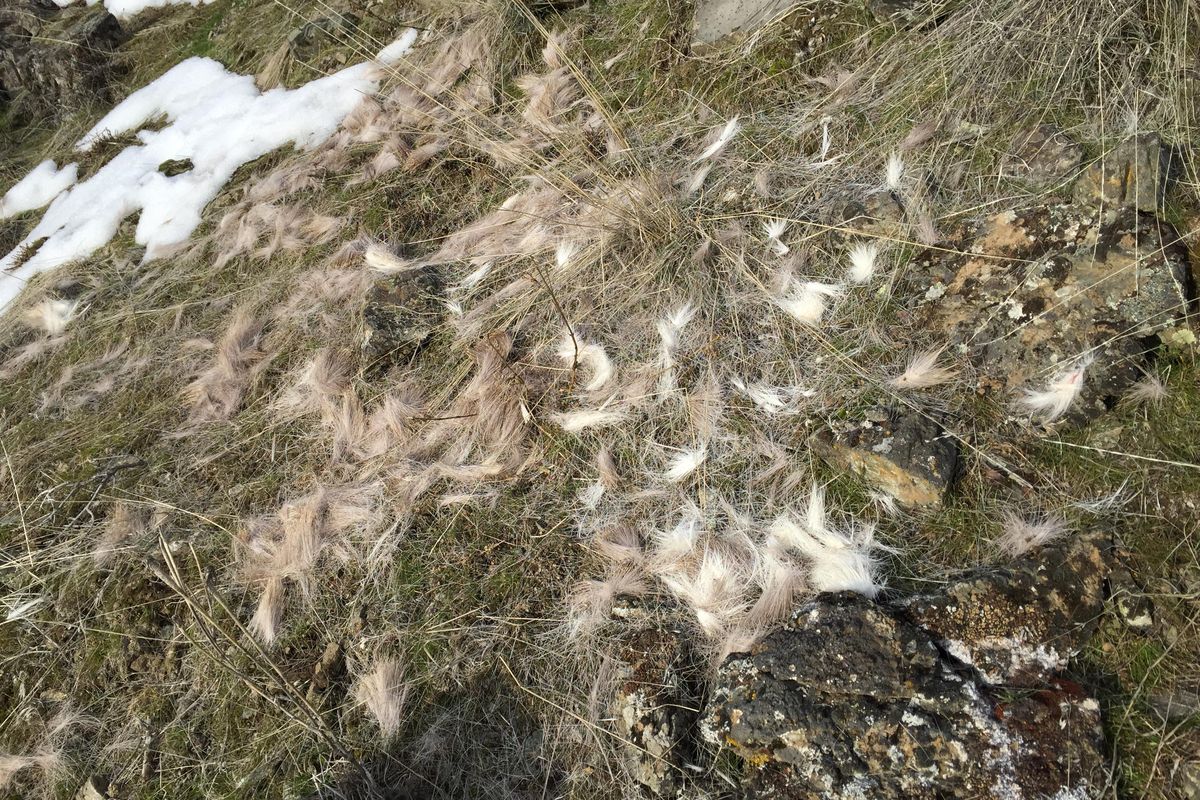Rule of nature outweighs emotional reaction

He didn’t look like he had a chance. And then he did.
Across from my cabin in Stevens County this past weekend, I spotted a bedded deer. The find sparked a two-day drama that included my greatest hopes, starkest fears and the realities of nature during a harsh winter.
Too old to be called a fawn, the button buck tucked his hind quarters up against a rock and stared across the canyon with his large ears focused on my noise and movement.
It’s an odd place for a deer to call home. Under a degraded basalt ledge that hangs out over the cliff, the buck parked himself directly on a steep and rocky slope across the deep mountain gorge facing my cabin.
At about 150 yards away, he made for easy viewing from my picture window.
At first inspection, I noticed his fur was a bit roughed up. But things began to become clearer, and gloomier, as soon as he stood. All of his ribs stuck out and he didn’t want to put any weight on his left front leg.
I went instantly from intrigue to sorrow. My mind began considering the worst-case scenarios: the ribs suggested he was near starvation and the leg problem made him an easy mark for any of a long list of predators that call Stevens County home.
Having injected myself into the cycle of life many times over decades of hunting, I contemplated one more. My human emotions made me wonder whether it would be better to end his suffering rather than allow coyotes to do it one-pulling bite at a time.
Nature, while sometimes cruel in our eyes, is always efficient.
As I continued to watch the buck struggle to survive his first winter, he hopped on three legs to a patch of grass that had been exposed by the sun. He devoured every blade and I realized: As long as he could eat, he had a chance.
Above the cliff, on the south-facing slopes, the sunshine had melted all the snow to reveal the green grass that got started in the October rains. I counted 32 mule deer on top and 18 whitetails on the lower slopes to the west.
Although I couldn’t see the predators, the deer movement let me know they were on timber fringes. All at once, a herd of mule deer would come bounding over the mountain before stopping and looking backwards at some unseen threat.
I decided to take a hike to look for antler sheds. I picked my route carefully to avoid those areas where I knew I would encounter deer. I didn’t want to add stress to their lives.
I used my binoculars to search the slopes for dropped antlers. Not long after my initial scan, I spotted something sinister: a deer carcass.
I hiked across the canyon and up over a tall ridge as a pair of golden eagles – and a pair of juvenile golden eagles – circled high above.
The dead deer, also a button buck, had been brought down by what I assumed to be coyotes. Starting approximately 60 yards uphill were several patches of deer hair. Like clues from a crime scene, it provided a glimpse into the deer’s last moments.
As I pondered the young buck, I couldn’t help wondering if it was a brother, or a cousin, or a playmate of the young buck hiding among the rocks near the cliff some 400 yards away. Could the cliff buck have been injured as part of the same attack?
I carefully picked my way down the mountain so that I wouldn’t push the deer on the upper slopes, and returned to find the cliff buck still hobbling his way around and nibbling on everything he could find.
As darkness fell, he crawled up to the cliff face and parked again with his back end against a rock. It was as if instinct told him that hiding among the boulders was better than exposing himself to the open slopes.
But the button buck also had no escape if a coyote came searching.
Hoping for the best, I turned in for the night. I left a crack in the window. In the middle of the night, a high-pitched, coyote-location howl pierced the blackness. It was answered by another.
My heart sank as I assumed the howls meant that the predators had located the cliff buck.
I awoke on Sunday to fresh snow. I glassed and searched every area of the cliff. The button buck was gone.
I thought about everything I had seen, knew and had hoped. I looked one last time, and there he was right where he had parked for the night. His head was up and his ears focused on my movements.
I loaded my sled with gear to escape the coming storm and looked over my shoulder as I made my exit.
The button buck was up, searching for grass in the rocks – hanging on.